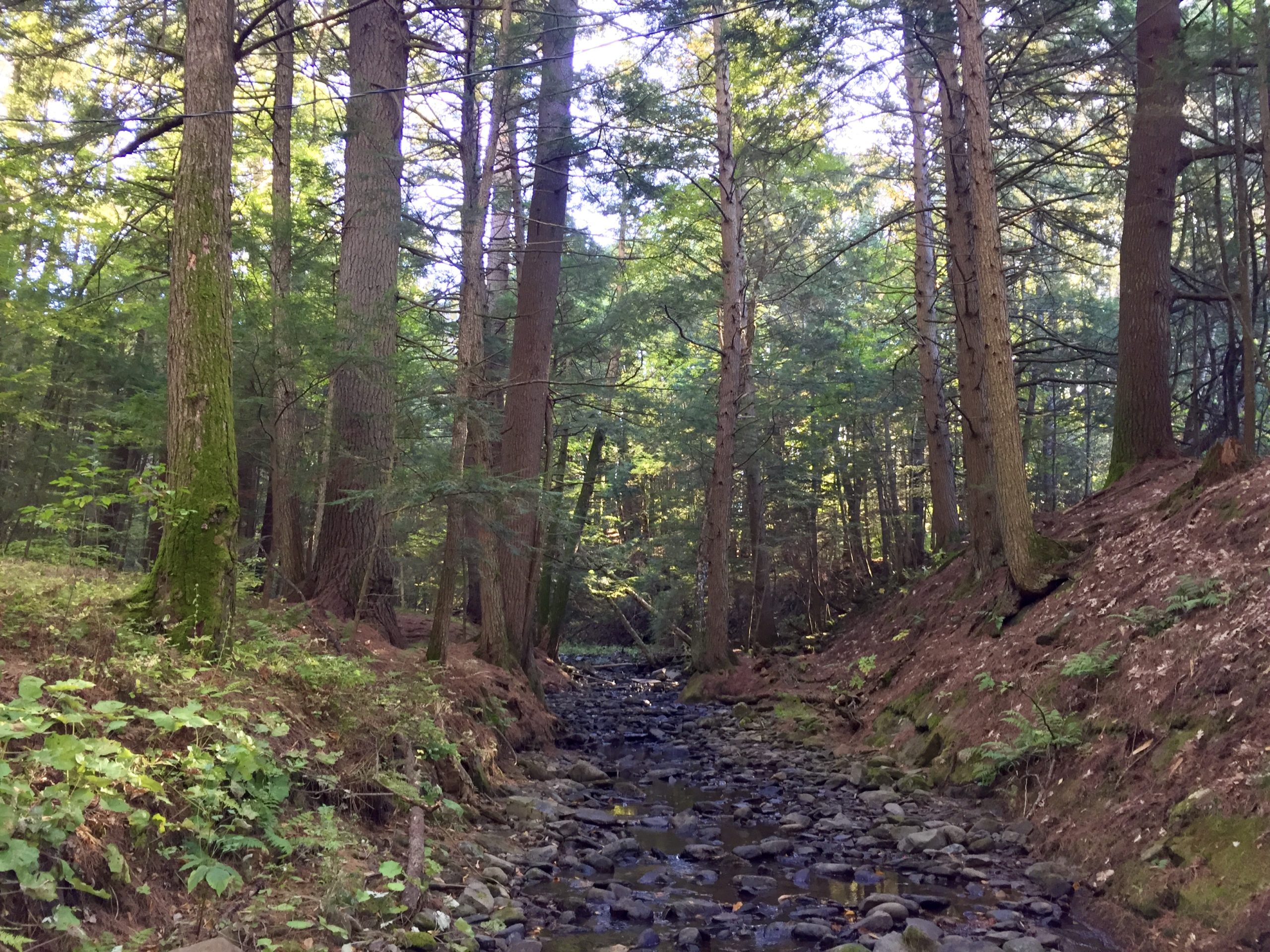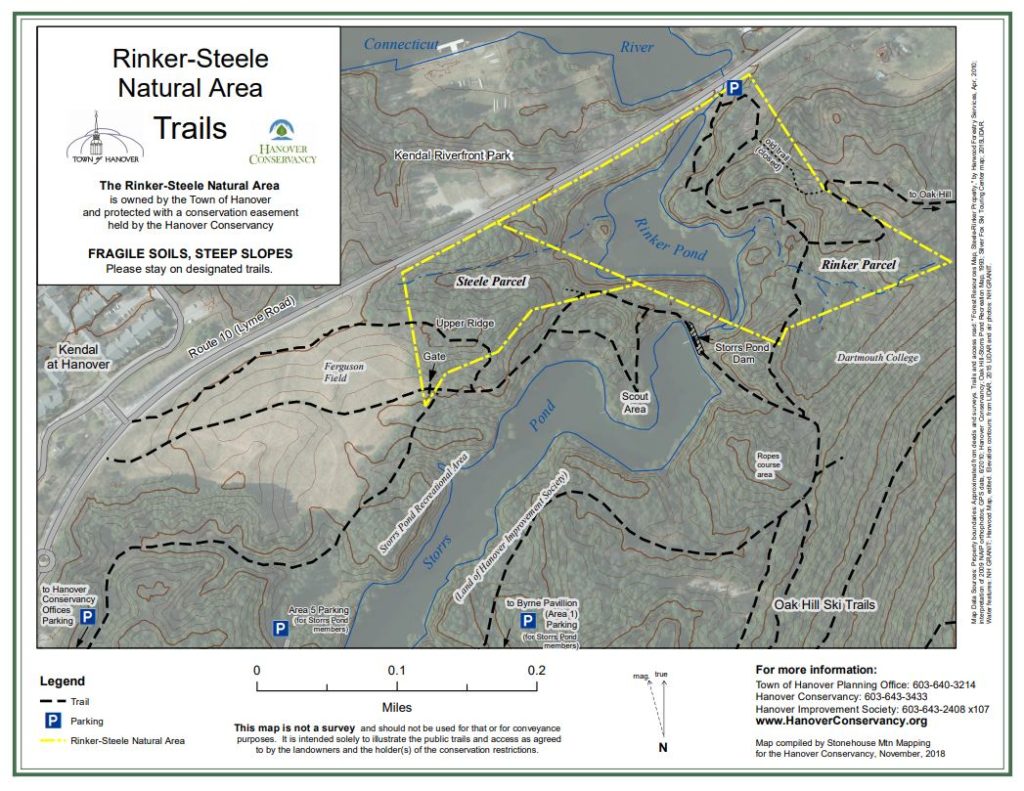
The 24-acre Rinker-Steele Natural Area provides a spectacular glimpse into Hanover’s post-glacial history. Owned by the Town and managed by the Hanover Conservation Commission, the property is permanently protected by a conservation easement held by the Hanover Conservancy.
While the Town and the Conservancy have been close partners for half a century, the Rinker-Steele Natural Area is the first town property for which a protective easement has been granted to the private non-profit conservation organization. This conservation easement and a detailed management plan guide how the property will be cared for and used.
Hike of the Month Archive:
November: Rinker-Steele Natural Area
How to get there
Park on the east side of Route 10 at the bottom of Chieftain Hill. (This is the Town’s designated parking spot for this property, despite the “no parking” sign just south on Route 10). You can also access the trails by parking at the Hanover Conservancy offices (71 Lyme Road) and walking through the Storrs Pond Recreation Area, or by parking at the dirt pull-off next to Kendal at Hanover, across from the meadow. From Storrs Pond, take the trail from Area 5.
Please note that the connecting Storrs Pond and Oak Hill trails are groomed in the winter and require a ski pass!
Several trails run through the property, many of which are open to mountain bikes. These trails connect to Route 10, Storrs Pond Recreation Area and Oak Hill. See the trail map above. Please note that the connecting Storrs Pond and Oak Hill trails are groomed in the winter and require a ski pass!





